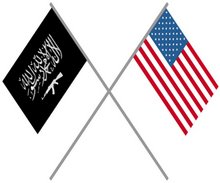Pakistani jets bomb S Waziristan Pakistani aircraft have attacked suspected Taliban fighters in South Waziristan near the Afghan border, in advance of an imminent ground assault.
The air raids on Sunday night came less than 24 hours after commandos stormed an office building and rescued dozens of security officials taken captive after an attack on the general army headquarters in Rawalpindi.
"The jets hit and destroyed two of their hideouts in Makeen and Ladha and we have a total of about 16 militants killed," a unnamed Pakistani intelligence official told Reuters news agency.
But the military has been conducting air and artillery strikes in South Waziristan for months, while moving troops, blockading the region and trying to split armed opposition to Islamabad's authority.
However, a ground offensive has yet to begin and may prove to be the army's toughest test since fighters turned on the state.
Imminent attackNevertheless, Rehman Malik, the interior minister, in an interview in Singapore said a ground offensive was "imminent".
"There is no mercy for them because our determination and resolve is to flush them out," he said.
"They have no room in Pakistan, I promise you."
Malik said members of the Pakistani Taliban and al-Qaeda were suspected to have been behind Saturday's attack on army headquarters, which ended a week when suicide bombers struck in the capital Islamabad and Peshawar, killing more than 50 people.
He also said the offensive against the fighters in South Waziristan was no longer a matter of choice.
"It is not an issue of commitment, it is becoming a compulsion because there was an appeal from the local tribes that we should do the operation," Malik said.
Provincial linksIn an interview with Al Jazeera, Imtiaz Gul, a political analyst, said he agreed that the government was correct to commence an offensive against South Waziristan.
"A lot of al-Qaeda and ideologically tainted people belonging to the Islamic movement of Uzbekistan under the patronage of the Taliban are sheltering there," he said.
But not everyone agrees. Zafar Jaspal, a Pakistani analyst, believes that Islamabad has concentrated too much on the Swat valley and South Waziristan.
"Till today, the government has no clear strategy on how to deal with the militants who are residing in southern Punjab," he told Al Jazeera.
"The person who was captured alive after [the GHQ attack] comes from Punjab, and other members of that group are also from Punjab ... certainly the government needs to have a parallel strategy - for Punjab as well as South Waziristan."
Al JazeeraComment:And so it begins.
This is not quite the final push — Orakzai is still in the Taliban's hands — but it might as well be. Once Waziristan has been won, the fate of the Pakistani Taliban will have been sealed. Most surviving militants will probably flee into Afghanistan, in a remarkable mirroring of the events eight years ago. This time, though, the US military will be there to meet them. The tactical imperative of increasing the number of troops in eastern Afghanistan is more clear now than ever: a Taliban surge is coming, and there must be an American surge to counter it.


